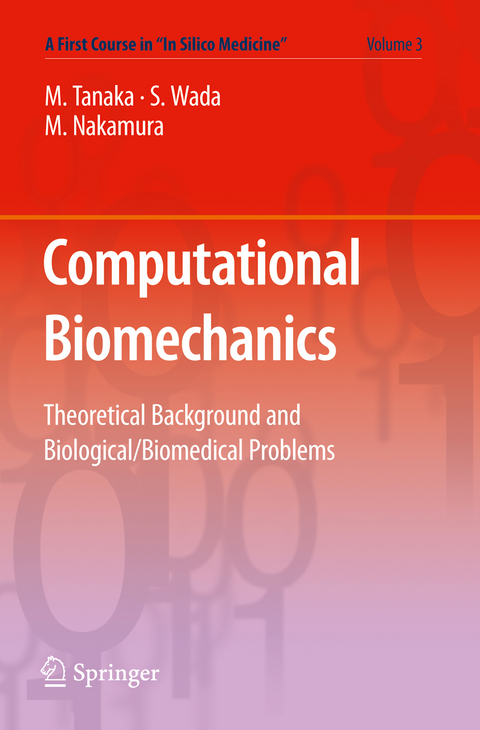
Computational Biomechanics
Theoretical Background and Biological/Biomedical Problems
Seiten
2012
Springer Verlag, Japan
978-4-431-54072-4 (ISBN)
Springer Verlag, Japan
978-4-431-54072-4 (ISBN)
This introductory textbook on computational biomechanics for in silico medicine is ideal for graduate school-level engineering students and young researchers in bioengineering and biomedicine. It introduces the development of physiome and systems biology.
Rapid developments have taken place in biological/biomedical measurement and imaging technologies as well as in computer analysis and information technologies. The increase in data obtained with such technologies invites the reader into a virtual world that represents realistic biological tissue or organ structures in digital form and allows for simulation and what is called “in silico medicine.” This volume is the third in a textbook series and covers both the basics of continuum mechanics of biosolids and biofluids and the theoretical core of computational methods for continuum mechanics analyses. Several biomechanics problems are provided for better understanding of computational modeling and analysis. Topics include the mechanics of solid and fluid bodies, fundamental characteristics of biosolids and biofluids, computational methods in biomechanics analysis/simulation, practical problems in orthopedic biomechanics, dental biomechanics, ophthalmic biomechanics, cardiovascular biomechanics, hemodynamics, cell mechanics, and model-, rule-, and image-based methods in computational biomechanics analysis and simulation. The book is an excellent resource for graduate school-level engineering students and young researchers in bioengineering and biomedicine.
Rapid developments have taken place in biological/biomedical measurement and imaging technologies as well as in computer analysis and information technologies. The increase in data obtained with such technologies invites the reader into a virtual world that represents realistic biological tissue or organ structures in digital form and allows for simulation and what is called “in silico medicine.” This volume is the third in a textbook series and covers both the basics of continuum mechanics of biosolids and biofluids and the theoretical core of computational methods for continuum mechanics analyses. Several biomechanics problems are provided for better understanding of computational modeling and analysis. Topics include the mechanics of solid and fluid bodies, fundamental characteristics of biosolids and biofluids, computational methods in biomechanics analysis/simulation, practical problems in orthopedic biomechanics, dental biomechanics, ophthalmic biomechanics, cardiovascular biomechanics, hemodynamics, cell mechanics, and model-, rule-, and image-based methods in computational biomechanics analysis and simulation. The book is an excellent resource for graduate school-level engineering students and young researchers in bioengineering and biomedicine.
Chapter 1: Introduction.- Chapter 2: Mechanics of biosolids and computational analysis.- Chapter 3 Mechanics of biofluid and computational analysis.- Chapter 4: Spring Network Modeling based on the Energy Concept.- Chapter 5 Toward in silico medicine.
| Reihe/Serie | A First Course in “In Silico Medicine” ; 3 |
|---|---|
| Zusatzinfo | XII, 196 p. |
| Verlagsort | Tokyo |
| Sprache | englisch |
| Maße | 155 x 235 mm |
| Themenwelt | Medizin / Pharmazie ► Pharmazie |
| Medizin / Pharmazie ► Physiotherapie / Ergotherapie ► Orthopädie | |
| Studium ► 1. Studienabschnitt (Vorklinik) ► Physiologie | |
| Naturwissenschaften ► Biologie ► Biochemie | |
| Technik ► Medizintechnik | |
| ISBN-10 | 4-431-54072-5 / 4431540725 |
| ISBN-13 | 978-4-431-54072-4 / 9784431540724 |
| Zustand | Neuware |
| Haben Sie eine Frage zum Produkt? |
Mehr entdecken
aus dem Bereich
aus dem Bereich


